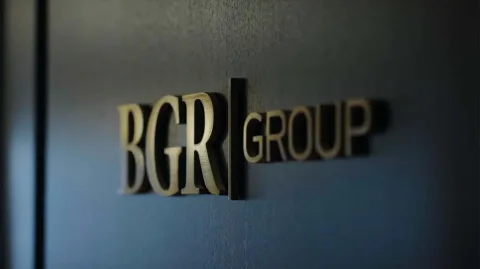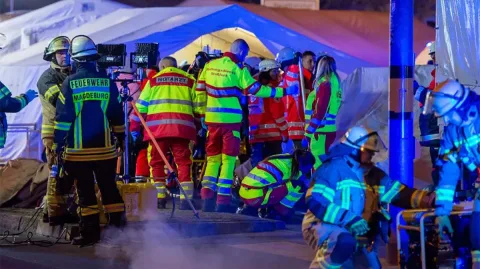Pirates of Barbary: Corsairs, Conquests and Captivity in the 17th-Century Mediterranean, by Adrian Tinniswood, Jonathan Cape…
 Pirates of Barbary: Corsairs, Conquests and Captivity in the 17th-Century Mediterranean, by Adrian Tinniswood, Jonathan Cape £20, 352 pages, FT Bookshop price: £16
Pirates of Barbary: Corsairs, Conquests and Captivity in the 17th-Century Mediterranean, by Adrian Tinniswood, Jonathan Cape £20, 352 pages, FT Bookshop price: £16
Pirates of the 21st Century: How Modern Day Buccaneers Are Terrorising the World’s Oceans, by Nigel Cawthorne, John Blake £11.99, 276 pages, FT Bookshop price: £9.59
A Captain’s Duty: Somali Pirates, Navy Seals, and Dangerous Days at Sea, by Richard Phillips and Stephan Talty, Hyperion £16.86, 286 pages
The Invisible Hook: The Hidden Economics of Pirates, by Peter T Leeson, Princeton £16.95, 271 pages, FT Bookshop price: £13.56
By what perverse karma has a group of plundering, murdering, lawless desperadoes become the stuff of children’s books and Hollywood blockbusters? Since their heyday, pirates have been transformed from bogeymen, such as the 18th-century sea bandit Blackbeard, into genial rascals, such as Johnny Depp’s Captain Jack Sparrow in the Disney franchise Pirates of the Caribbean. Surely no other class of criminals has been detoxified so thoroughly?
Piracy has a long history. The word was first used by an ancient Greek writer in around 140BC and pirates have since menaced every corner of the globe. Their place in western folklore owes much to the 17th and early 18th centuries, the so-called golden age of piracy, when pamphlets and books relayed tales of derring-do and nefarious deeds at sea to an avid readership. One such pamphlet, Newes from Sea, Of Two Notorious Pirates, was commissioned in 1609 by Shakespeare’s publisher. It sold more copies than King Lear.
While old-fashioned pirates have been sanitised into family-friendly entertainment, real pirates of a distinctly un-family friendly variety are staging a resurgence in the modern world. Growth in world trade and the collapse of the rule of law in states such as Somalia have seen a dramatic rise in attacks on shipping since 2000: earlier this week a Russian oil tanker was hijacked off the Horn of Africa. Somali pirates with their AK-47s and flip-flops are generating books that feed much the same appetites as Newes from Sea.
In the ghostwritten A Captain’s Duty, US merchant captain Richard Phillips relives his experience of being taken hostage by Somali pirates in the gung-ho style of an action movie trailer: “Either I’m getting out of here alive or they are. But not both.†Pirates of the 21st Century is less melodramatic – Nigel Cawthorne restrains himself to just the one mention of “shark-infested waters†– but its overview of modern global piracy is as hasty as you’d expect from a “true crime†cut-and-paste job written by an author whose previous books include The World’s Ten Most Evil Men.
Links between modern and historical piracy emerge in Adrian Tinniswood’s Pirates of Barbary, a history of the north African corsairs who wreaked havoc in the Mediterranean until the 19th century. And the economist Peter T Leeson examines the economic motives of piracy in The Invisible Hook. Were 17th- and 18th-century “golden age†pirates proto-socialists or Adam Smith-anticipating free-marketeers?
Modern piracy is a serious problem, costing shipping an estimated $150m in 2008, according to Pirates of the 21st Century. Yet the threat is minor compared to the past. In Somalia, in 2008, there were an estimated 300 sailors being held hostage. In contrast, Algiers, hub of Mediterranean brigandage, held tens of thousands of captive Europeans in the 17th century.
North African pirates were known as corsairs, the Arab equivalent of the privateers that European nations hired to attack enemy shipping, as with Sir Walter Raleigh’s expeditions to the Americas. Corsairs operated under the protection of coastal cities stretching from Morocco to Libya, an area known to Europeans as the Barbary Coast. To the English, its inhabitants were called “Turksâ€, “Moors†or the catch-all insult “Barbariansâ€.
Pirates of Barbary skilfully evokes the dread that corsairs aroused. The Barbary Coast ports that sponsored them were outposts of the Ottoman empire. Corsairs were the “sea front†in the centuries-long stand-off between the worlds of Christianity and Islam. An Algerian writer in the 1620s called piracy the “sea jihadâ€, holy war at sea. At the same time, Islam was being demonised as “the present terror of the world†by European writers.
The threat of corsair raiding parties was felt as far away as Iceland – plundered in 1627 by an Algiers-based pirate whose men were said to have “killed people, cursed and beat them, and did all that is evilâ€. Four hundred Icelanders were captured, to be ransomed or sold as slaves. “The Icelandic liturgyâ€, Tinniswood writes, “still includes a prayer beseeching God for protection against ‘the terror of the Turk’ .â€
But corsairs weren’t always Turkish or Arab. Many were European pirates who based themselves in north Africa for security. Their alliance with Barbary cities such as Algiers was, as Tinniswood wryly puts it, “an early and efficient example of public-private partnershipâ€.
The corsair who attacked Iceland was, in fact, a Dutchman called Jan Janszoon who converted to Islam and changed his name to Murad. The notorious 17th-century Englishman John Ward, “the most famous pirate of the world†according to London street balladeers, ran a fleet from Tunis. He also converted, causing outrage in his homeland. In person, Ward was less demonic than his reputation suggested. An observer recalled he was “very short, with little hair, and that quite white; swarthy face and beard. Speaks little, and almost always swearing. Drunk from morn till night.â€
Mediterranean piracy fizzled out in the early years of the 19th century. “Well-armed professional navies grew more effective at enforcing the rule of law on the high seas and the immensely powerful British navy pursued a vigorous anti-slavery policy,†Tinniswood explains. Corsairs weren’t religious fanatics waging war against Christian Europe. Their purpose was primarily mercenary, supplying the slave societies of the Barbary coast with captives and booty. When their economic effectiveness ended, so did they.
The economics of piracy is the subject of Peter T Leeson’s The Invisible Hook. Focusing on the pirates who flourished in the Americas and the Caribbean in the 17th and early 18th century, it is the latest salvo in an ongoing debate about Atlantic piracy.
One side of the debate holds that the golden age of piracy was merely an outbreak of criminality of no lasting significance. An opposing view, advanced by Peter Linebaugh and Marcus Rediker in 2000’s The Many-Headed Hydra, recasts pirates as political radicals, their numbers swelled by the driving out of revolutionaries from England after the failure of Cromwell’s Commonwealth and the restoration of the monarchy in 1660.
There is evidence to support the bizarre-seeming idea of pirates as political progressives. Life on board pirate ships was less hierarchical, less cruel and more lucrative than life in the English navy or merchant ships. Pirate crews administered their ships with proto-democratic voting systems and followed codes of conduct called “Pirate Articlesâ€. They punished captains of captured boats for being vicious to their crews, shared booty equally and were tolerant of different cultures and races.
Atlantic buccaneers had black and white sailors working alongside each other. In the Mediterranean, Barbary corsairs carried a mix of European and Arab sailors and Turkish janissaries. “Lingua franca†was a pirate language that spread through the Mediterranean so cosmopolitan pirate crews could communicate. “Pirate republics†in places such as Madagascar, Morocco, Haiti and the Bahamas were run along quasi-utopian principles, with outlaws of different backgrounds freely mingling.
Leeson, a professor at George Mason University in the US, turns this viewpoint on its head. He envisages pirates as free market radicals who illustrated Adam Smith’s maxim about people supposedly acting out of self-interest, the “invisible hand†of history. “Serving others’ interests gets them to cooperate with us, serving our own,†Leeson explains.
Jauntily characterising the typical pirate ship as akin to “a Fortune 500 companyâ€, he reorients pirates as precursors of Milton Friedman and the Chicago school of economics. On-board democracy was not some “quasi-socialist pirate ideology†but instead was designed to foster a feeling of solidarity, which enhanced each individual pirate’s self-interest in getting as much loot as possible. The Jolly Roger “played a central role in maximising their profit maximising purpose†via a process known to economists as “signallingâ€: a way of communicating our intentions to someone so they do what is in our interest, ie give up a ship to pirates without a fight.
“I’m convinced economics brings us much closer to the ‘correct answers’ than the history does alone,†Leeson insists. But the result is complacent and ahistorical. An example is his claim that pirates’ reputation for blood-curdling acts of torture was designed to create “a threatening brand name†in order to cow victims into passive acquiescence. This is offered without a shred of evidence to show torture rates declining over time, as the logic of his argument insists it must.
The true economics of piracy is more nuanced. There has often been a Robin Hood element to it. “Our fish were all eradicated, so we can’t fish now, so we’re going to fish whatever passes through our sea because we need to eat,†a Somali pirate is quoted as saying in Pirates of the 21st Century. Somalia’s coastline fell prey to overfishing and illegal toxic dumping by foreign corporations following the state’s collapse in the civil wars of the 1990s. “Piracy will not stop unless we get a government,†another pirate says.
Pirates of the 21st Century lacks first-hand reportage or serious analysis. Nonetheless, a sense emerges of the organised nature of modern piracy. In Somalia, for example, gunmen are often former militia men. The men piloting the fast dirigibles used to board cargo ships tend to be fishermen. One 350-strong gang of Somali pirates nicknamed the “Coast Guard†allegedly has a kind of IT department handling the global positioning (GPS) and communications systems.
In 2009 the average ransom of a Somali-hijacked vessel was $2m. When four pirates seize control of Phillips’ cargo ship off the Horn of Africa, as recounted in A Captain’s Duty, they whoop with delight about having sprung a US-flagged ship. Jackpot!
Several of the piracy victims in Pirates of the 21st Century deride their attackers as “paranoid druggies†and “unsophisticated hoodlumsâ€. Others, such as Capt Phillips, are struck by their orderliness. Treatment of hostages varies too. The crew of a French luxury yacht discovered their captors had a good conduct manual on how to seize a foreign vessel and spoke of being made to feel “relaxed and cheerfulâ€. The pirates even invited them to a barbecue. Yet violence is common, too, particularly in the Malacca Straits, where pirates are apparently much more ruthless than the Somalis.
Phillips initially gets on pretty well with his pirates but they fly into a fury when he tries to escape by swimming to a nearby US navy frigate. “They were shocked that I’d tried to escape. I wasn’t playing by the rules and I’m sure they felt I was endangering them by trying to save myself.â€
The codes of piracy are a recurrent theme in all the above books. In the 17th and 18th centuries, pirates described themselves going “on the account†when they set sail. “We aren’t pirates, we’re professionals,†says an Indonesian pirate in Pirates of the 21st Century. “Relax, Captain, relax,†shouts the first pirate to board Captain Phillips’ ship. “Business, just business.†Although anti-pirate rhetoric has traditionally painted them as lawless rogues, piracy comes across as an outlaw but organised branch of maritime trading life with its own traditions and customs.
The golden age of piracy took place when the globalised world was taking shape with the rise of European empires and trans-national corporations such as the East India Company. Pirates sailing on the high seas were linked, however parasitically, to this new capitalist way of life. Hostile to traditional hierarchies, stateless, highly mobile, ruthlessly acquisitive, they signalled the emergence of a certain type of modern consciousness. No wonder they fascinate us: in them we see a glimmer of ourselves.
Copyright The Financial Times Limited 2010.
[facebook_ilike]





